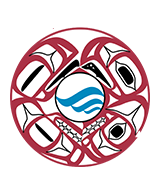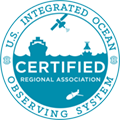Lack of Oxygen? Hypoxia in Pacific Northwest Waters
Since 2000, fish and crab kills in the Puget Sound and the Oregon coast shelf have become more common and frequent occurrences.
Hood Canal
The Seattle Times
- Massive fish die-off forecast, June 2004
- No easy solutions to die-off in Hood Canal, June 2006
- Scientists tally damage a day after fish die-off in troubled Hood Canal, September 2006
- People helping to suffocate Hood Canal, scientists say, July 2008
- Other news stories from the Hood Canal Dissolved Oxygen Program
Oregon Coast
The Oregonian
What is killing the crab and fish? A short-lived intrusion of low oxygen water into areas where it is not expected. These hypoxia events have been sensationalized as "Dead Zones", and where the label Dead Zones is synonymous with the fish kills, the term hypoxia just describes the amount of oxygen in the water.
Just like we know there is less oxygen at the top of Mt. Everest than at sea level, there are some areas in estuaries and the ocean that we know are normally hypoxic, or have low levels of oxygen. Similar to Himalayan Sherpas, the animals that live in these areas are acclimated to and can survive in this hypoxic water. However, when the hypoxic water moves to places that normally have higher amounts of oxygen – for example (hypothetically of course!) if the level of oxygen at sea level was suddenly the same as at the top of Mt. Everest – that is when tragedy strikes. That is how a Dead Zone is formed.
| National Observing System Partners Alliance for Coastal Technologies (ACT) Southeastern Universities Research Association (SURA) Integrated Ocean Observing System IOOS | |||||||

